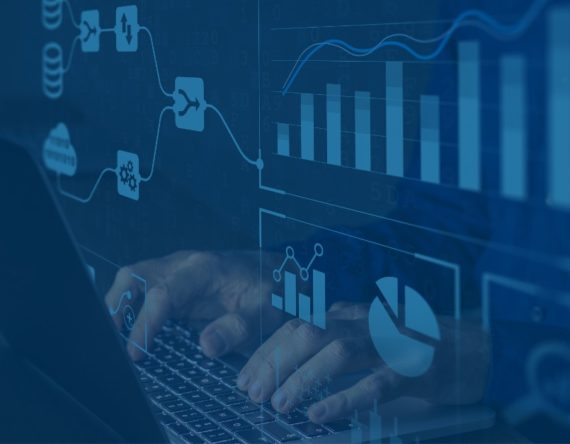The rise of AI agents—autonomous decision-making systems—is set to revolutionize business operations by significantly expanding the role of AI beyond generative models like ChatGPT. Unlike traditional AI tools, agentic AI can independently execute complex tasks, prioritize actions, and adapt to changing environments, raising both immense opportunities and unprecedented risks. While AI agents promise enhanced efficiency and productivity, their autonomy introduces significant legal, security, and financial vulnerabilities, requiring robust governance and oversight.
This article highlights key concerns including privacy risks, cybersecurity threats, regulatory compliance challenges, and potential failures in decision-making, which could lead to financial losses or reputational damage. It also provides guidance on how to successfully integrate AI agents: organizations must implement strict access controls, real-time monitoring, human oversight, and cross-functional governance teams to ensure compliance, accountability, and long-term trust in these systems.
The proliferation of AI agents—autonomous, decision-making systems powered by artificial intelligence—is set to fundamentally transform how businesses and the broader economy operate. You can think of agents as specialized employees that excel at particular functions or verticals, each designed to handle a specific set of tasks within a clearly defined scope of responsibility. AI agents are capable of operating independently, autonomously prioritizing actions, and adapting to changing circumstances to achieve their objectives, although their roles should (ideally) remain limited to the functions they have been programmed to perform.
A recent Accenture study predicts that by 2030, AI agents will be the “primary users of most enterprises’ internal digital systems”, while by 2032, consumer interactions with agents will surpass time spent on apps[1]. A separate IDC report estimates that over 40% of Global 2000 businesses will implement AI agents and agentic workflows into knowledge work by 2027[2]. While there are countless industry forecasts on AI agent adoption, they all consistently point to one undeniable trend: the emergence of AI agents represents the largest expansion of knowledge workers since the digital revolution.
The increased efficiency, productivity, and operational capabilities from AI agents will be astounding, but the legal, security, and financial risks associated with agentic AI are equally significant and unlike anything organizations have encountered before. Is your organization equipped with the resources and expertise needed to manage these risks as you scale up your agentic workforce?
From Generative AI to Agentic AI
The shift from generative AI to agentic AI is driven by advancements in Large Language Models (LLMs), which enable machines to generate human-like textual content based on natural language instructions. These models are already reshaping industries by streamlining tasks such as drafting legal documents, formulating marketing strategies, and analyzing complex datasets for more informed decision-making.
Many are familiar with LLMs through platforms like OpenAI’s ChatGPT or Google’s Gemini. While these tools can generate impressive content, they are not, by themselves, AI agents. LLMs and other generative AI models remain constrained by design, limited to predefined roles such as chatbots or recommendation engines. They cannot function autonomously or make independent decisions outside these boundaries. While these kinds of generative AI tools do pose some risks to organizations, the risks are mostly confined to their specific applications, because a human must take additional action to bring those risks to fruition. Consequently, the need for comprehensive oversight has not kept pace with the rapid adoption of these technologies.
However, when additional layers of software and logic are applied, and AI is granted access to secure resources and services—such as through APIs—an AI model becomes capable of executing tasks outside itself, enabling decision-making and actions far beyond simple content generation. In essence, AI is granted agency. With the right programming, agentic AI can set its own worksteps, prioritize actions, and adapt to its environment in pursuit of its objectives. These systems can “leave the machine,” utilizing external resources to perform complex tasks that extend far beyond their original capabilities.
Risks Will Be Amplified Along With The Rewards
But with this useful autonomy comes an equally unprecedented level of risk. Without rigorous compliance frameworks, AI agents could (and almost certainly will) introduce numerous vulnerabilities that are difficult, if not impossible, to track or reverse. The very autonomy that powers these systems is also their greatest weakness, creating perilous blind spots for organizations that are ill-prepared to monitor or govern the actions of their AI agents.
Consider the lessons of self-driving cars (a type of AI agent) and the challenges involved in making them a common reality. While these technologies demonstrate how AI can navigate complex environments, they also highlight its fallibility—autonomous decisions that result in accidents leave regulators, developers, and operators scrambling to determine accountability.
In corporate settings, an AI agent with the ability to manage financial assets might autonomously reallocate resources based on market predictions, only to make catastrophic errors in financial distributions—potentially sending vast sums of money to the wrong accounts, making poor purchasing decisions, breaching fiduciary duties, or even violating insider trading laws. The fallout from such mistakes could lead to significant financial losses, regulatory investigations, and lawsuits.
In logistics, AI agents tasked with optimizing shipment routes could inadvertently violate trade laws or sanctions by directing shipments to restricted regions or parties, or unintentionally breach contractual obligations, resulting in legal and financial consequences.
In customer service, AI agents can deliver hyper-personalized interactions but also might lose money on customer returns or overuse compensation through coupons, or even alienate customers with unempathetic decisions, resulting in lost business and damaged reputations.
Preparing For The Coming Agent Revolution
Companies are responsible for the actions of their AI agents and must ensure that they function responsibly, securely, and in accordance with the law and organizational policies. Effective governance will be essential for harnessing the benefits of these agents while mitigating potential risks. This involves setting up persistent monitoring systems and allowing for proactive interventions to prevent the fallout from undesired behavior. Furthermore, fostering a culture of effective AI agent management and risk mitigation must start from the top, with leadership driving the commitment to compliance. Cross-functional collaboration among teams with diverse expertise, supported by robust analytics on agent behavior, will be key in ensuring that an organization’s AI agents remain aligned with company guidelines and goals.
Given the broad range of applications and industries impacted by agentic AI, the risks are as diverse as they are significant. While it’s impossible to list them all here, below are some critical areas that demand special attention:
Privacy. Agentic AI systems require extensive data access for autonomous operation, raising risks of unintended exposure and regulatory non-compliance with General Data Protection Regulation (GDPR), California Consumer Privacy Act (CCPA), and other privacy frameworks. This spans sensitive personal information, employee records, and proprietary data.
Cybersecurity. The ability of agentic AI to dynamically interact with systems, networks, and third-party services introduces countless security concerns. Agents handling IT infrastructure such as system updates, network reconfigurations, or cloud resources could bypass security protocols, build malicious software in the attempt to fulfil their duties, or inadvertently create vulnerabilities across interconnected systems.
Personnel Decisions. AI-driven decisions in hiring, compensation, and workforce management can perpetuate biases or produce flawed outcomes that violate labor laws and anti-discrimination regulations without proper oversight.
Consumer Protections and E-commerce. Organizations must carefully manage AI-driven recommendation engines, customer service bots, and sales practices to ensure transparency, fairness, and proper consent.
Domain Specific Regulatory Compliance. Highly regulated industries face additional domain-specific challenges when agents are allowed to make autonomous decisions, such as patient care standards in healthcare, transaction monitoring requirements in financial services, or safety protocols for public utilities. Effective management of these systems will require specialized knowledge to ensure that AI agents operate within the complex frameworks and nuances unique to each industry.
Building Trust and Reliability in Autonomous Agents
As autonomous agents become more prevalent, maintaining consistency and fostering trust within organizations is crucial. Companies must actively monitor these systems and implement robust guardrails to ensure they function within safe and ethical boundaries. Important questions to address include: What data are agents accessing? How reliable are their outputs and decisions? Who is responsible for watching them?
Transparency in these areas is essential to building trust with employees and stakeholders. When creating a monitoring system, establish a clear governance framework and technology roadmap to guide implementation. Also, develop comprehensive communication and maintenance plans to ensure the organization remains informed about how monitoring operates and how guardrails adapt to advancements.
Key Recommendations:
1. Strict Access Controls & Programmatic Guardrails
Limit and track AI agents’ access to sensitive data and systems, ensuring they operate within predefined boundaries. Implement rigid constraints to trigger human review when necessary, reducing the risk of harmful outcomes.
2. Real-Time Monitoring & Strict Logging
Continuously track AI agents’ actions, flagging any anomalies or unauthorized behavior. Maintain detailed logs of AI agents’ decisions and processes to ensure accountability, compliance, and help with troubleshooting.
3. Human Oversight & Reasoning Models
While autonomous, AI agents should still have human oversight for critical decisions. Use reasoning models (which provide clearer insights into rationale behind decisions vs. traditional LLMs) to explain their decision-making processes, ensuring transparency, and simplifying audits.
4. Clear Documentation
Maintain comprehensive records of the AI agents’ lifecycle, including their design, data sources, algorithms, and updates. This documentation provides transparency, facilitates compliance, and aids in resolving issues or regulatory inquiries.
5. Compliance by Design
Incorporate compliance and ethical considerations from the outset of AI agent integration. This approach helps mitigate risks related to privacy, fairness, and legal compliance, ensuring adherence to standards.
6. Red Team Testing
Regularly simulate adversarial attacks to identify vulnerabilities in AI agent systems. These tests help uncover weaknesses, allowing proactive mitigation before exploitation.
7. Indemnification Clauses
Clearly define liability-sharing in vendor contracts for any AI agent-related failures. This ensures all parties are aware of their responsibilities, reducing the financial and legal risks for the deploying organization.
8. Training and Awareness
Ensure employees are trained on AI agents and their potential risks. Regular training helps identify issues early and ensures proper management of AI agent-related challenges.
9. Continuous Improvement & Feedback Loops
Implement mechanisms to improve AI agents over time, based on new data and feedback. This ensures AI models are regularly updated and decision-making processes refined.
10. Third-Party Risk Management
Ensure due diligence is performed on third-party AI agent vendors, verifying their security, compliance, and ethical practices. This reduces the risk of external vulnerabilities impacting your organization.
11. Incident Response Plan
Develop a robust plan for addressing AI agent system failures or breaches. Include clear steps for containment, communication, investigation, and mitigation to maintain organizational trust and recover swiftly.
12. Cross-Functional AI Governance Team
Establish a dedicated team composed of individuals from every functional area (e.g., legal, IT, compliance, HR, operations) to oversee the implementation of AI agent governance and compliance measures. This team will ensure that all policies and practices are effectively integrated and maintained across the organization, fostering collaboration and alignment across departments.
Autonomous agents are rapidly becoming a fundamental part of business, but companies must tread carefully amid the pressure to move quickly. The risks of deploying agents without adequate oversight are substantial; as a result, organizations must prioritize strong governance and compliance frameworks before integrating agents into critical operations. Managing this transition effectively is vital—not only to remain competitive but also to ensure long-term success in an increasingly automated world.
[1] Accenture (2025) “Technology Vision 2025: “Technology Vision 2025: AI: A Declaration of Autonomy.” Published January 7, 2025. https://www.accenture.com/us-en/insights/technology/technology-trends-2025.
[2] “IDC FutureScape: Worldwide Digital Business Strategies 2024 Predictions”. Published October 2024. https://www.idc.com/getdoc.jsp?containerId=US51665624.).
If you have any questions or would like to find out more about this topic please reach out to Kashif Sheikh.
To receive StoneTurn Insights, sign up for our newsletter.







